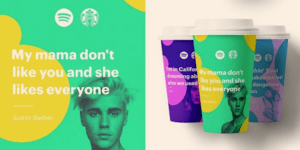NMSDC-certified MBE Phoenix Lifestyle Marketing Group shares how strategic partnerships can elevate both brands participating in the partnership.
In our current fast-moving business environment, brands are constantly looking for effective ways to market themselves to remain competitive. Your product offering is outstanding, your marketing strategy is great and yet you still feel like there is still an opportunity to offer more value to your customer base. A strategic partnership is a practical option for many businesses that want to get their brand in front of a new audience. Whether it is a joint venture, joint marketing campaign or brand partnership, the overall goal of profitability is the same for every brand. This marketing strategy can help you get a leg up on the competition, reach new market segments, gain new customers, and ultimately boost your business. All brands want to increase their market share, and if a partnership can also help them become a category leader that is the icing on the proverbial cake.
Since strategic partnerships are not a new idea and can take on many forms, the key is to identify which type will be most effective in helping you to achieve your marketing goals. I had to reflect on one of my earliest childhood memories to acknowledge one of the most effective examples of a strategic partnership that worked. This was the breakfast cereal box with a branded toy inside. In my opinion, it was the perfect marriage of two brands because both companies knew it was a high probability that kids would encourage their parents to buy the cereal with the toy, even if they were not familiar with the brand. It was a winning promotion for me because I was able to get another race car without having to ask my parents for it. The targeted demographic was parents and children, so the simple act of marketing these two brands together increased sales and created brand loyalty for both companies. In order for a strategic partnership brand marketing program to work the way it is intended, both brands must complement each other and deliver similar customer profiles.
As the business world continues to evolve year after year, strategic marketing partnerships are still building upon the same basic premise as the toy inside the cereal box. The caveat you have to understand is whether you are selling toys, cereal or t-shirts, there is another company fighting for the same customers. The biggest opportunity from the outset is that if you partner with the right complementary brand, you won’t need to build a customer base from scratch. This strategy will work for smaller lesser-known brands as well. When it comes to borrowed credibility, there is no more important act than the initial introduction to the marketplace by the more recognizable brand. Therefore, collaborating with one or more brands to create a marketing strategy that leverages shared resources can be more cost-effective than traditional marketing strategies.From our work with national brands at The Phoenix, we know that finding the right partner is essential to the success of any strategic partnership. If you want to increase brand presence in your niche market and access new markets, this will be your most important decision. We make sure values, shared purpose, and strengths align before we agree to any type of joint venture for ourselves or a client. This is paramount to our decision-making process because we believe that choosing the wrong partner can cause irreparable damage to both companies and/or brands. We have all seen a marketing partnership that left us wondering what those two companies have in common. If one of our clients was a weight loss company, we would not seek a partnership with a donut shop, regardless of its popularity or large customer base. In our opinion, a true strategic partnership is not just connecting brands through a joint promotion but more about how we increase the value proposition for each brand.
Let’s review two examples of strategic partnerships with national brands that created a win-win relationship.

Starbucks and Spotify
Starbucks’ partnership with the music streaming service Spotify is an attempt by both companies to build brand loyalty among a younger demographic. Spotify’s streaming app will be integrated with My Starbucks Reward program to encourage their 10 million members to create their own in-store playlists for Starbucks stores and continue listening to them even after they have left the premises.
The playlists will be available through both apps, and it gives Spotify a new pool of 10 million potential subscribers to target. They are ahead of the curve because the combination of brand loyalty programs and music platforms are likely to be the wave of the future.

Taco Bell and Frito Lay
Taco Bell partnered with Frito Lay to create a Doritos Locos Taco. Featuring a shell made out of Nacho Cheese Doritos snack chips, it was a flavor pairing just waiting to happen. This seemed like a match made in cheese heaven, but it still took some innovation and forward thinking to pull it off.
The idea to wrap the taco in a classic Doritos bag allowed loyal customers of both brands to easily identify the promotion. The extraordinary success of the Doritos Locos Tacos is another example of why a complimentary strategic partner can increase sales for both brands.


